The iconic outfits that cause outrage
Even if you have never watched Sex and the City, you probably still know that Carrie Bradshaw once wore a tutu. The look symbolised the TV show. But it could have been very different. The series writer and producer Darren Star didn’t “get it”, says the show’s costume designer Patricia Field in her new book. “Who’s going to understand this girl, in New York, in a tutu?” He wanted to put her in a powder blue frock for the opening credits instead.
More like this:
– How to make your clothes last longer
– Why being messy is good for you
– The Scandinavian folk clothing for now
It sums up the way many people feel about costumes created by Field, who has been responsible not only for the wardrobe of Sex and the City but also those of Ugly Betty, The Devil Wears Prada and Emily in Paris. The apparent randomness of the now-82-year-old New Yorker’s ensembles, as well as their rollercoaster extremes, provokes a range of reactions in audience – delight, bafflement and even anger.
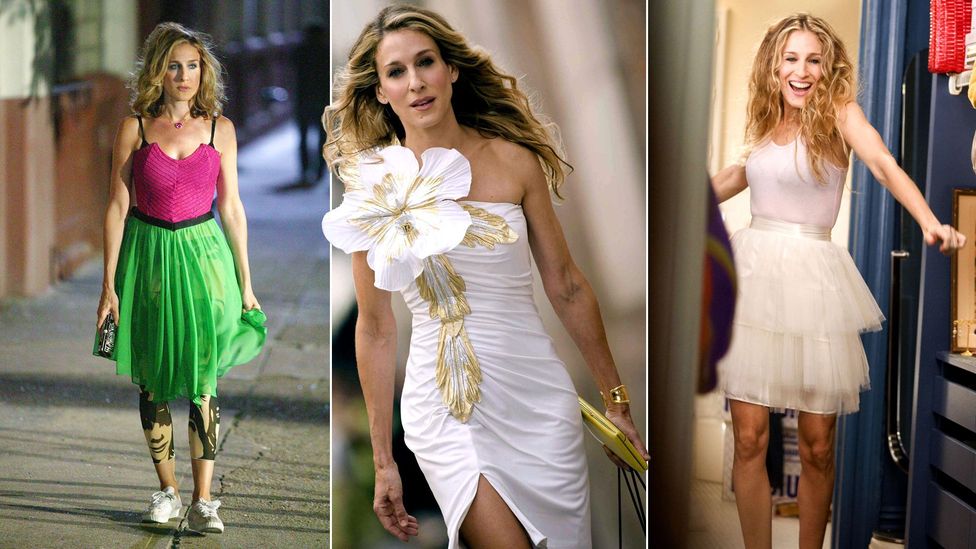
The outfits worn by Carrie Bradshaw in Sex and the City were iconic – or perplexing, depending on your point of view (Credit: Alamy)
Field herself has an idea why her costumes get some people so hot under the collar. “Maybe they don’t have air conditioning!” she jokingly tells BBC Culture. “Don’t take yourself so seriously. Enjoy yourself! Enjoy life! Try a little originality!”
What is it about Field’s costumes that makes them so divisive? The half-Armenian, half-Greek, US-born fashion renegade has always been about individuality not trends, a mixing of styles and a bending of rules. Although now she is known as the woman who dressed Carrie Bradshaw, she was a stalwart of the New York underground scene. She ran shops frequented by Jean-Michel Basquiat and Keith Haring, Patti Smith and Debbie Harry, and was a fixture on the ballroom scene, as well as an incubator for young, diverse design talent. Her store, she writes in a new memoir, became a “global destination for freaky fashion. People came from all over the country and abroad to see what tricks we had up our neoprene sleeves”.
SATC was the first time that kind of high-fashion was shown on TV characters without it being purely for comedy – as it had been on British series Absolutely Fabulous. It is one thing knowing that designer fashion happens, on catwalks and the rarefied pages of Vogue, but another seeing it on terrestrial TV, especially drama; these are characters that on some level, however aspirational or escapist the show, we are meant to relate to. But they collect their dry-cleaning wearing Manolo Blahniks.
Up until Sex and the City came on TV, “costume was very much in the background,” says Kevin Freeman, a professor of costume design at Wimbledon College of Arts. “When I was training, the teaching was that if it’s a good design, you tend not to notice it.” SATC placed the clothes centre stage, “which is what Field tends to do whenever she does film or TV work, the clothes have their own role within the piece. You either embrace that and run with it or you don’t.”
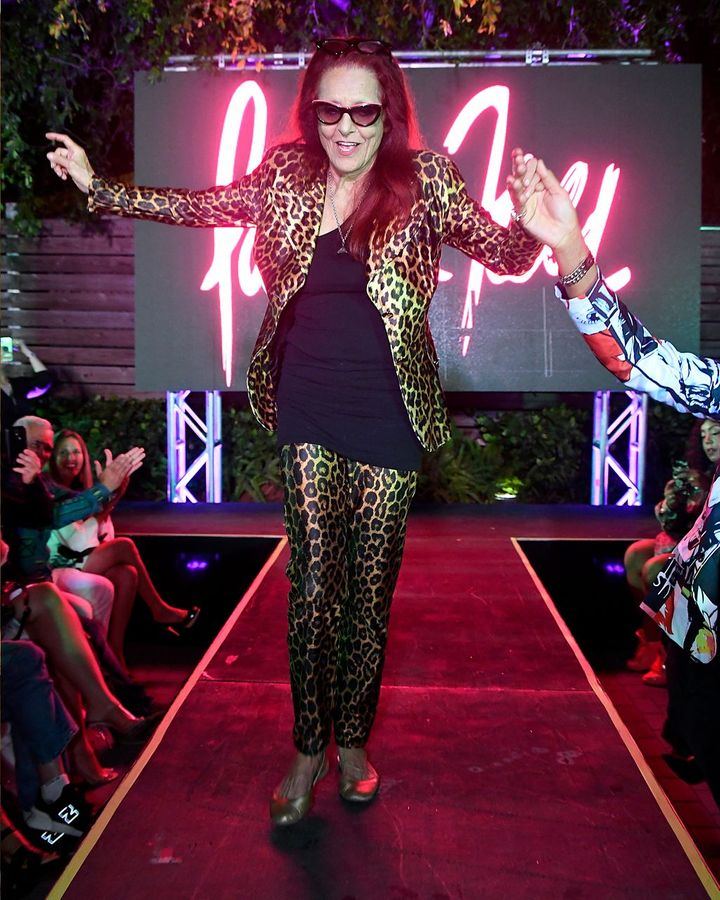
A stalwart of the New York underground scene in the 1970s and 80s, Patricia Field went on to dress stars of TV and film (Credit: Getty Images)
Field does nothing to tame fashion’s more extreme edges: “Carrie wearing a bird on her head or going down the street in a ballgown, that way of playing with high fashion simply hadn’t been used before,” says Pamela Church Gibson, reader in cultural and historical studies at the London College of Fashion. This is what many viewers love and find joyful and empowering about Field’s work, and the characters that wear it – the unapologetic way they get dressed according to mood and not convention. But it galls others.
The somewhat ironic thing is that Field’s work is anti-trend. Take Bradshaw’s tutu. It made such a lasting impression precisely because it wasn’t on-trend. As Field writes, “I knew anything less would be dated by next season. People want to see what they haven’t seen before – not some trendy shift dress from fall 19-90-whatever.” Yet people view SATC’s looks as emblematic of high-fashion’s most outrageous tendencies.
Field’s costumes get some people angry in the same way that fashion in general gets some people angry, both for good reasons and bad. On the one hand there is the materialism and consumerism of it all – the rate of costume changes and extravagance of wearing couture to lunch don’t sit well on a burning planet.
On the other hand, there is the fact that fashion in general is often viewed as superficial and frivolous in ways other art forms usually swerve. The fact that it is traditionally associated with women is no coincidence. “There were a lot of criticisms that because these women take so much pleasure in clothes that it was simple-minded,” says Deborah Jermyn, a reader in film and television at Roehampton University and author of a 2009 book about SATC – “that you can’t be saying something critical and socially interesting if you are also interested in fashion.”
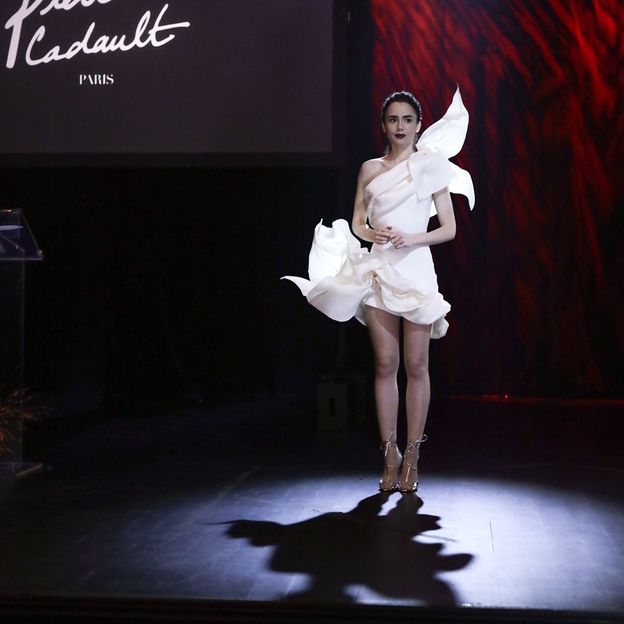
The TV series Emily in Paris is among the shows that feature costumes by Patricia Field (Credit: Netflix)
Certain items came in for specific criticism. Take the nameplate necklace now so synonymous with Bradshaw that to many it is known simply as the “Carrie necklace”. It was something, Field says in her book, that she spotted on the young Hispanic and African-American customers who came to her shop. When asked, she is straightforward in her take: “Yes, I appropriated the name necklace from the multitude of young, gorgeous girls who were my customers in my shop,” she tells BBC Culture. “The name necklace always caught my eye, but I have always given the credit to them. At the time, I thought ‘Let me show this to Sarah Jessica!’ Happily she liked it.”
But, says Jermyn, “the series itself is consumed in a way [in which] that gets lost,” says Jermyn, “and clearly that’s really problematic”. The show was criticised for its whiteness, its characters criticised for their racist behaviour, and the costumes cannot be untangled from that.
There are privileges inherent in these outfits. “I think it’s important to think about class and ‘appropriate bodies’ as well as whiteness,” says Jermyn. “If a working-class woman or woman of colour or a large-bodied woman dresses in a comparable way that is perceived to be ‘loud’ or ‘over-accessorised’, that would be received very differently from the kind of pushback that somebody like Lily Collins or Sarah Jessica Parker gets.” She continues: “You can think about the kind of things to celebrate around refusing to fit in a box but you still have to ask the question who gets to be able to make that refusal.”
If the clothes are inextricable from the characters, then so is the anger they elicit. From Carrie to Lily Collins’s Emily, the characters that Field dresses aren’t always the most popular. Emily is a peppy young American in Paris, a 20-something marketing executive who eats, sleeps and breathes social media. Her clothes speak to that. Take the day she showed up to her new job in France, without speaking a word of French but wearing a tourist-chic blouse with a picture of the Eiffel Tower on it. Field, who co-designed season one with French colleague Marylin Fitoussi, and stayed on as costume consultant for season two,paired it with Christian Louboutin boots with “Paris” emblazoned across them and a satchel handbag that, Field writes, is “often associated with French women”.
“The ensemble,” she continues, “was consciously trying too hard, just like Emily. Her outfit for her first day of work was an unequivocal, if not slightly misguided, love letter to France’s capital.” Her penchant for literal dressing, from the berets to the Mona Lisa tote, fits perfectly with her pep.
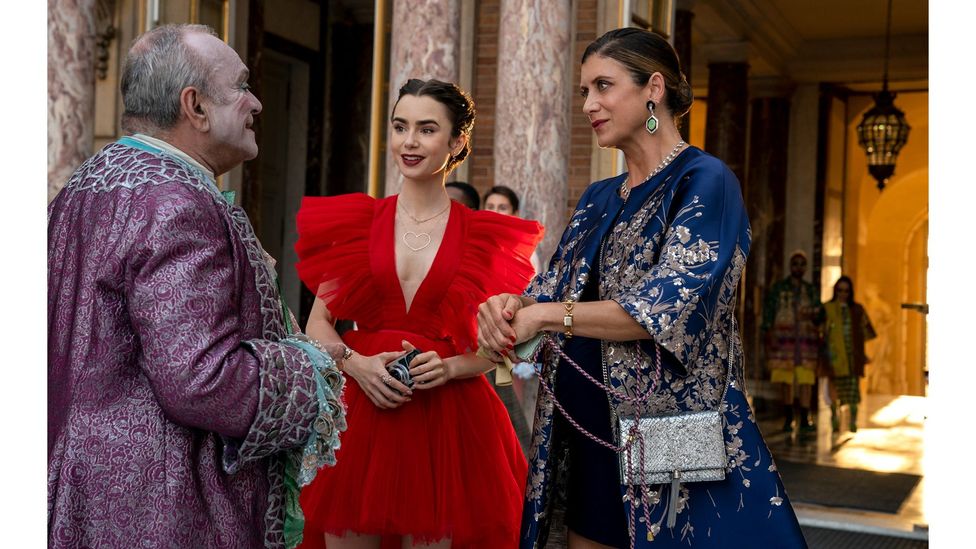
In the finale of season two, Emily, played by Lily Collins, wears an outsized tulle gown that creates a mood of dominance (Credit: Netflix)
For the finale of season two, Emily attends a fashion show in Versailles’ hall of mirrors in a voluminous, frothy tulle gown from the 2019 Giambattista Valli x H&M collaboration; the perfect metaphor for Field’s love of high/low fashion. The dress takes up a lot of literal and metaphorical space, adding fuel to the fire of the sartorial culture war that rages throughout the series. It is, says Jermyn, about “cultural hierarchies, these notions of Euro-chic versus the idea of Americans as brash. It is about dominating – her clothes take over when she enters a space.”
Breaking the rules
The clothes feed into that sense that these aren’t characters the audience is necessarily meant to like, at least not 100% of the time. Going back to the tutu, Field knew what she was doing: “It’s the princess syndrome,” she told Darren Star. The clothes, like an extra layer of characterisation, will annoy in the same way that Carrie annoys even, at times, her best friends.
In terms of not being understood – or outright disliked – Field’s costumes also often subvert ideas of how women have traditionally been expected to present themselves. When fashion blogger Leandra Medine Cohen started her Man Repeller fashion blog in 2010, it seemed to offer a label for the kind of dressing that had been Carrie’s bread and butter. Carrie will wear a baker boy hat and a poncho, and silhouettes that swamp her slender frame, as well as corsages bigger than the strappy tops they are pinned to. On a day at the beach in the Hamptons she wears tropical-print board shorts, a clashing bikini top and pink-tinted sunglasses. Out shopping she will wear an 80s bubblegum-pink prom frock. In one infamous look she wears a lime-green skirt with pink crop top and a belt around her bare waist, decoration without even a hint of functionality.
Look to Emily and with outfits such as her season two ensemble of a pink fur-trimmed cardigan teamed with multi-coloured parachute trousers, fingerless white gloves and a plaid newsboy cap, there is a clear throughline.
This so-called “man repeller” aspect is very “telling about some of the things that are at stake in all this,” says Jermyn. “These ensembles seem to be saying ‘look at me’, they welcome a gaze – these are clothes that say ‘I’m aware that this is going to attract attention’ – but they’re not saying I want to attract admirers or attention that is sexualised. They’re not about saying I’m dressing to appreciate my sexiness.” There is, she says, “something that people really feel confused and angered by in that.”
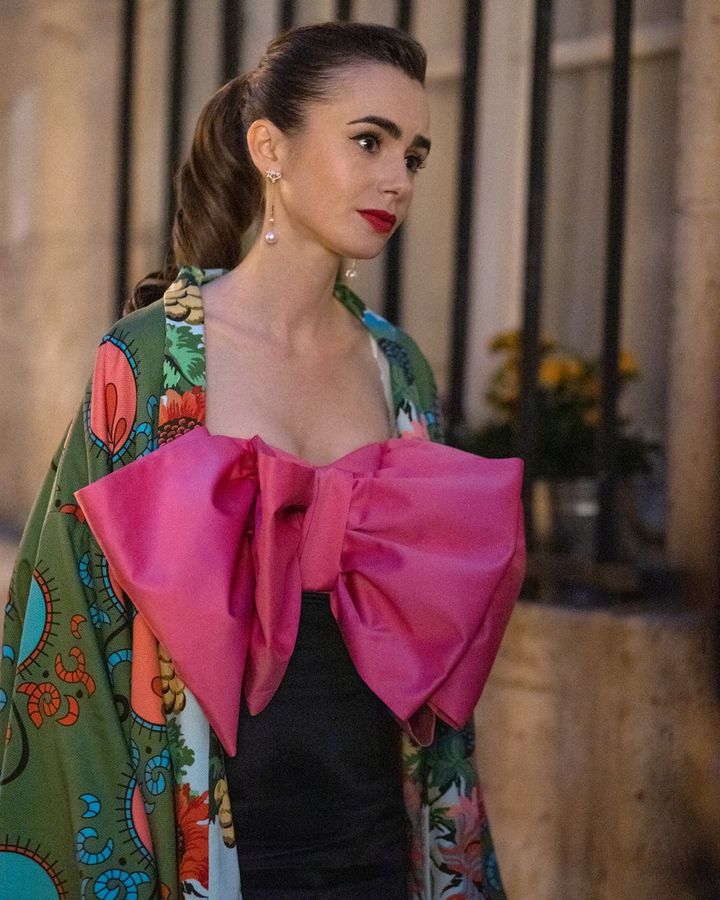
There is a throughline between Carrie’s ‘man-repeller’ outfits and Emily’s more quirky sartorial moments (Credit: Netflix)
Field dresses women who feel emboldened to dress for themselves. Certainly they sometimes dress in a “sexy” way, but they do so out of choice. It speaks volumes that what Field describes in her book as the “straight types from HBO” thought “the only way to read sexy on screen was by trotting out the old stereotype of big boobs, miniskirts and high heels”. Whereas Field interpreted it by putting a “powerful, libidinous woman like Samantha” in designer bodysuits by Giorgio di Sant’ Angelo. Does Field think there is anything in the fact that (heterosexual) men often don’t seem to “get” her work, at least at first? “I feel sorry for them,” she says, “because they are locked into the same conservative wardrobe over and over. In general, men do not have the opportunity to be creative and expressive about how they present themselves. They solve that problem by wearing T-shirts and polo shirts.”
Field’s school of dressing ignores pre-set rules. “Partly it’s to do with blurring what’s daywear, what’s nightwear, those sorts of surprises about what they wear to what spaces,” says Jermyn. For Emily, she writes, she took elegant high-end pieces by Greek designer Vassilis Zoulias “on a plunging rollercoaster ride, by pairing one with the lowest of the low” a bucket hat by an ultra-fast fashion label. For those hung up on the rules of good taste, or the idea of appropriateness, this can feel unnerving.
For Field, the fact that Meryl Streep’s ruthless fashion editor character, Miranda Priestley, in 2006 film The Devil Wears Prada, would have “white, high-style and shocking” hair made perfect sense, Field writes in her book. But the producers didn’t agree, she writes. “To them, white equalled old lady.” As Jermyn puts it: “It’s still taken as something unexpected. It is risky because it foregrounds questions of age when women are constantly being told to hide and erase the signs of aging.” But in the figure of Priestly you have an older woman trying to bust out of archaic, gendered stereotypes of how she “should” age.
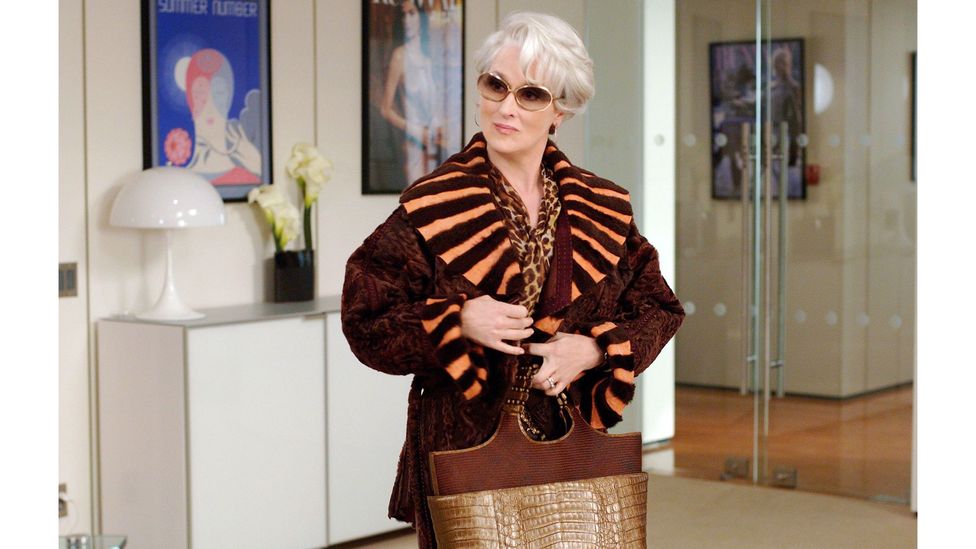
In The Devil Wears Prada, the ruthless fashion editor, played by Meryl Streep, was styled by Field with a look that broke new ground (Credit: Alamy)
Field breaks and rebuilds constructs at will, pairs high and low, luxury and fast fashion with abandon, clashing prints and styles. But it runs deeper, says Jermyn, to pushing boundaries in “much bigger senses” exploding “our expectations of how women should conform through clothes”. Through her work, she has offered a blueprint for sartorial self-expression.
So does the woman who showed such fearlessness in dressing some of the most famous fictional characters in recent history understand why some people might feel afraid to wear what they want? “I have no idea,” Field tells BBC Culture, “you’d have to ask them”. But for her personally, “I have no fear in both fashion and in general. The main idea is to express yourself in an educated and interesting way.”
Pat in the City: My Life of Fashion, Style, and Breaking the Rules by Patricia Field is published by Harper Collins.
If you would like to comment on this story or anything else you have seen on BBC Culture, head over to our Facebook page or message us on Twitter.
And if you liked this story, sign up for the weekly bbc.com features newsletter, called The Essential List. A handpicked selection of stories from BBC Future, Culture, Worklife and Travel, delivered to your inbox every Friday.








